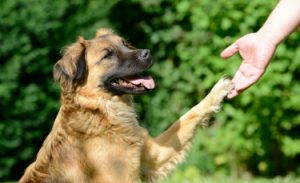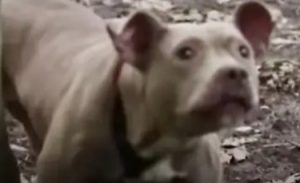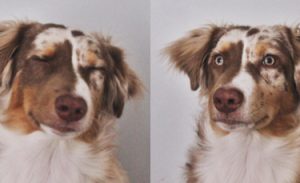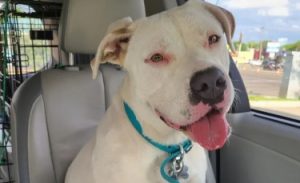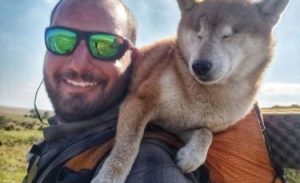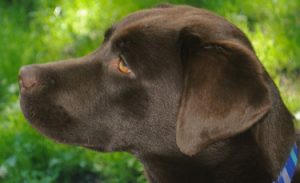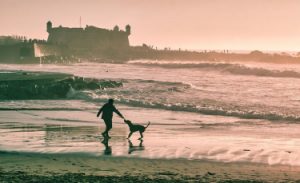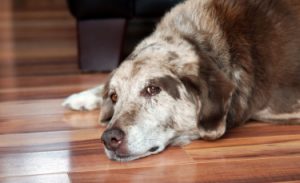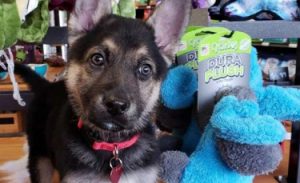Other name: Large Japanese dog
The Akita Inu is a majestic dog, with a robust constitution and a strong character. Spitz type, he is large in size and well proportioned. This dog seduces with its plush appearance and the great serenity it exudes. The Akita Inu is a perfect dog in every way for family life. He can be both athletic or not, it all depends on the needs of his master. He is calm, considerate, caring, independent, loyal and barks very moderately. His education is rather easy and his health, despite 2 hereditary diseases, quite solid.
<!–
–>
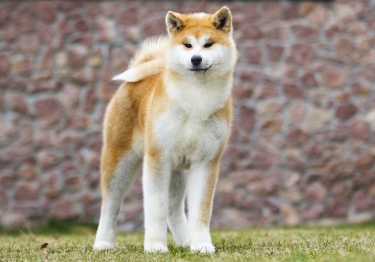
| Short | |
| Japan | |
| Big | |
| Round |
| Sex | Weight | Cut |
|---|---|---|
| Female | From 30 kg to 45 kg | From 58 cm to 64 cm |
| Male | From 32 kg to 52 kg | From 64 cm to 70 cm |
History of the breed
The Akita Inu is a Japanese breed, originally from Akita province in Japan . Early in the 17th century, canine named Akita Matagis were used as dog fighting. This dog also hunted wild boars, deer and bears. Then in the mid-19th century, the breed was crossed with the Tosa and the Mastiff.
Following the ban on dog fighting in 1908, the breed was improved. In 1931, the Akita Inu was designated a “Historic Monument” thanks to 9 of its dogs. Like many dogs, the Akita Inu nearly went extinct with World War II, where all dogs except German Shepherds were captured. Then, breeders managed to save it and the Akita’s popularity has grown steadily since. The will of the breeders to find the characteristics of the original breed has borne fruit so that the one we find today is the real one, the pure one. The Fédération Cynologique Internationale recognized the breed on March 13, 1964.
Akita Inu Pictures
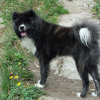
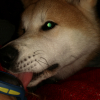
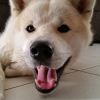
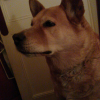
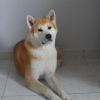
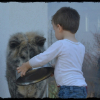
See all Akita Inu photos of Woopets members
Physical features
Its coat : fairly short and hard, the density of the undercoat isolates it perfectly while the topcoat, well supplied at the withers and the rump, protects it from bad weather.
Its color : dress generally composed of fawn red, white, brindle, but more rarely sesame (red-fawn hairs with black tips).
His head : well proportioned to the body, it has a broad forehead. The base of the muzzle, broad, tapers off, but does not end in a point.
His ears : triangular in shape, small and thick. Slightly rounded at a point, they are erect and inclined forward.
His eyes : quite small and almond shaped (almost triangular), very dark brown.
His body : a compact figure with beautiful musculature, a straight, solid back and a well-lifted stomach. Females are longer in body than males.
Its tail : thick, it is carried high and it remains constantly rolled up on the back, like an ellipse.
Behavior and character
| Affectionate | |
|---|---|
| Calm | |
| Protective | |
| Independent | |
| Hunter | |
| Barks / howls |
Behavior with others
| Cohabitation with children | |
|---|---|
| Sociable with other animals | |
| Love strangers |
Very sociable, the Akita Inu is very affectionate with close friends . Distrustful of strangers , this makes them an excellent watchdog . Even if he shows a certain independence, he likes the human presence. Well educated, he loves the company of children and shows great patience with them. Calm, docile and receptive, he barks only when needed. Gifted with a beautiful intelligence, he quickly understands what is asked of him. The Akita Inu is endowed with a very great intelligence , which allows him to understand his environment as well as possible.
The Akita Inu
is it right for you? Take the test!
Education
| Clever | |
|---|---|
| Obedient |
Very pleasant to live with , this dog has a strong character . Thus, a strict and firm education must be operated from an early age to prevent him from taking power in his home. Trust between him and his master must be in order. The latter must also be gentle to achieve his ends. Like all his fellows, he must know from the start who is the master. Well educated, he is very clean and easy going.
Living conditions
| Suitable for apartment living | |
|---|---|
| Good for new masters | |
| Love it hot | |
| Love the cold |
The Akita Inu adapts very well to life in the country or in the city , in a house or in an apartment. He is a dog known for his calmness who will not bark continuously when he is alone. Very discreet , it does not take up much space and can lie down quietly in a corner of the room while keeping an open eye on the surroundings.
Health
| Solid | |
|---|---|
| Ease of gaining weight |
Even though it is a hardy dog breed, there are two autoimmune diseases that can affect it: sebaceous adenitis (skin disease, hair loss) and VKH (depigmentation of the skin, inflammation of the skin). eye and brain). The first is an autoimmune skin disease that promotes hair loss. The second is also an autoimmune and inherited disease that causes inflammation of the brain and the iris of the eye. Preventive tests are not yet on the agenda. Therefore, the pedigree history of the line of his dog is preponderant before any adoption. In addition, like any primitive dog, its health is in all respects solid. He is not afraid of inclement weather.
Hypoallergenic breed
No
Litter size
Between 4 and 12 puppies
| Major concerns |
|
||||
| Minor concerns |
|
| Occasional concerns |
|
||
| Suggested tests |
|
To protect you from these risks and insure your companion in the event of health problems, Woopets recommends an Akita Inu dog insurance .

function showAssuranceForm () {var siteReferer = var id_race_association = ‘3’; //console.log(id_race_association);success: function (html) {}});}document.addEventListener (‘DOMContentLoaded’, () => {$ (‘# assuranceModalBanner’). on (‘show.bs.modal’, function (event) {showAssuranceForm ();});});
Life expectancy
Minimum: 11 years old
Maximum: 15 years
The life expectancy of an Akita Inu is, on average, between 11 years and 15 years.
Calculate the human age of your Akita Inu!
To choose… 1 year 2 years 3 years Four years 5 years 6 years 7 years 8 years 9 years 10 years 11 years old 12 years 13 years 14 years old 15 years old 16 years old 17 years 18 years old 19 years old 20 years 21 years old
Maintenance and hygiene
| Ease of maintenance | |
|---|---|
| Cost of maintenance | |
| Hair loss |
| Drool level | |
|---|---|
| Ease of grooming |
The Akita Inu requires little maintenance , it can be brushed once or twice a week . During the moulting period, in the fall and in the spring , it loses its hair and its undercoat, in the form of tufts that can be easily removed by hand. During the three or four weeks of moulting, it is therefore necessary to do daily brushing.
He is known to be very clean , because he grooms himself a bit like a cat. Even to relieve himself, he takes all the time necessary to choose the appropriate place. Since it is clean and elegant in nature, an annual bath is sufficient. In addition to the weekly brushing , the Akita Inu requires almost no attention. Do not hesitate to wash his eyes and ears regularly.
To eliminate tartar buildup and the growth of bacteria, a dog’s teeth should also be brushed regularly . If they do not wear out naturally, the nails have to be cut. If you are new to this, it is recommended that you seek advice from a veterinarian.
Price and budget
Purchase price
Mini
1000 € Maxi
1500 €
The purchase price of an Akita Inu is between 1000 € and 1500 €.
Annual maintenance cost
Mini
€ 950 Maxi
1000 €
The annual maintenance cost of an Akita Inu is between 950 € and 1000 €.
Name ideas for an Akita Inu
| Male |
|
| Female |
|
None of these proposals suit you? Use our tool to find the name of your Akita Inu!
Food
The Akita Inu is quite picky about food . It will not always tolerate industrial food made from kibbles very well, especially if they are made from cereals, which are very allergenic. Instead, focus on meat-based croquettes or traditional food such as raw meat, fresh vegetables and starches. Carnivore, he will love it.
Want the best for your dog?
Create the tailor-made power supply for your Akita Inu
I discover !
PROMO -30% | Delivered to you!
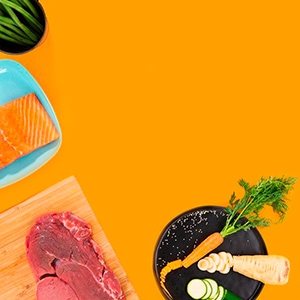
Physical activity
| Athletic | |
|---|---|
| Energy level | |
| Potential to play |
The Akita Inu is suitable for athletes and non-athletes . The Akita Inu loves walks and can easily accompany you on your outings by bike or while jogging. It should be taken out daily and endures all types of weather. But it is also suitable for non-athletes since he likes to stay in contact with humans.
Famous Akita Inu Breed Dogs
Hachiko : This Akita Inu is famous for the loyalty he has shown to his owner , Professor Hidesaburo Ueno . Every evening, the dog waited for his master to return to Shibuya station. After returning from work, Hidesaburo and Hachiko used to walk home. In 1925, the man died. The family tried to find a new home for the quadruped, but the quadruped always ran away to return to the home of its late owner.
His remains are kept at the National Museum of Nature and Science in Tokyo. A statue representing him was erected in Shibuya station.
Lasse Hallström adapted this story into film. In 2009, Hatchi was released, in which the American actor Richard Gere played the role of the owner of Hachiko .
Competitions
| Classifications & Standards |
|
Others
| Master character <span class="btnTooltip qTip2" title="- Calm: the master must be gentle and know how to show patience. – Active: the owner must be energetic and dynamic to live in harmony with his dog. – Hyperactive: the owner must be stimulating and very restless to suit the temperament of his dog.”> |
Calm |
|---|
We talk on the forum
akita inu
Message from kevannou
akita inu
Guest message
Need advice for Akita Inu
Message from LaGrouz
Acquire an Akita inu puppy
Message from Sébastien P.
What insurance for my Akita Inu?
Message from Sébastien P.
Do you have a question about the Akita Inu?
Do not hesitate to ask Woopets visitors for advice on the forum!
FCI Information
FCI No.
255
FCI Group
Group 5: Spitz-type and primitive-type dogs
Recognized by FCI
Since 2001
</div


